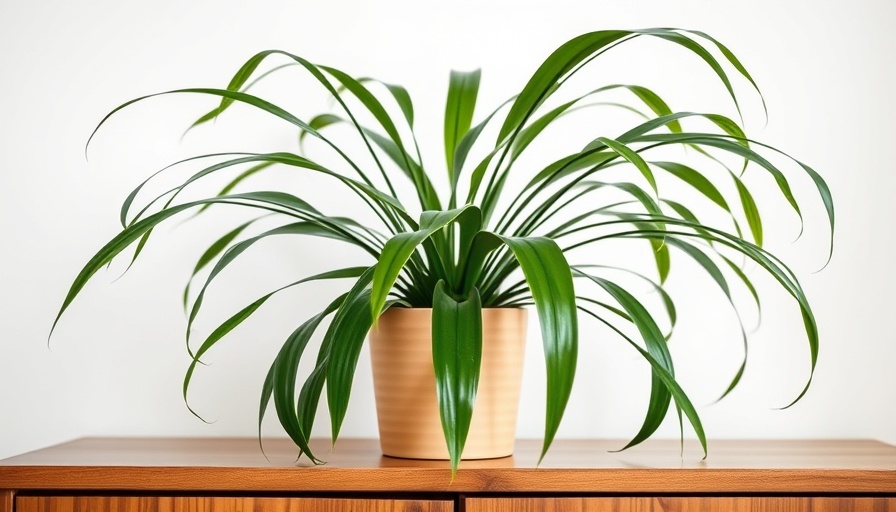
The Marvelous Spider Plant: A Gardener’s Delight
Spider plants are much more than their creepy-crawly name might suggest. Known scientifically as Chlorophytum comosum, these verdant beauties have vibrant, arching leaves that cascade elegantly, making them perfect for any home setting. They're not just aesthetically pleasing, but also practical—renowned for their air-purification qualities and ease of care, spider plants are the go-to choice for novice gardeners and seasoned plant enthusiasts alike.
Easy Care Tips for Your Spider Plant
Caring for spider plants is straightforward. Their versatility allows them to thrive in various conditions, making them an ideal addition to any indoor garden. Here are some essential care tips:
- Location: Spider plants thrive in bright, indirect sunlight but can adapt to lower light conditions. Ideal placements include kitchens and bathrooms where humidity is a plus.
- Watering: Allow the top half of the soil to dry out between waterings. When the time comes, give your plant a generous soak, ensuring the pot can drain well.
- Humidity: While spider plants tolerate less humidity, a little moisture can go a long way in keeping them happy. Consider using a mister to simulate their native tropical environment.
- Soil: Opt for well-draining potting soil to prevent root rot, a common issue for other houseplants.
These plants are quite forgiving, making them perfect for first-time gardeners.
Propagation Made Easy
Spider plants are also known for producing "pups"—little offshoots that can be easily propagated. This trait provides the perfect opportunity to expand your indoor jungle!
To propagate, simply snip the offshoots with a clean pair of scissors, and place them in water until they develop roots. Once they are ready, transfer them to soil, and watch them grow!
Common Issues: Troubleshooting Your Spider Plant
While generally resilient, spider plants aren't completely immune to problems. Here are a few potential issues you may encounter:
- Brown Tips: This could be a sign of either over-fertilization or inadequate watering. Rinse the leaves to remove accumulated salts and adjust your care routine accordingly.
- Pests: Watch out for common pests like spider mites or aphids. Regularly wipe your plant’s leaves to deter these nuisances, or consider using insecticidal soap.
Spider Plants in Your Home: Why They Matter
In a world that often feels disconnected, indoor plants can create a sense of tranquility and connection to nature. Spider plants not only enhance the aesthetics of a room but also offer psychological benefits such as reducing stress and improving mood. Incorporating a bit of green into your living space can uplift your spirits while promoting a healthier indoor environment.
The Eco-Friendly Choice
Embracing plants such as the spider plant is a small step towards a more sustainable lifestyle. By growing houseplants, we foster a sense of responsibility toward our environment while enjoying the countless benefits they bring.
Connecting with Your Green Thumb
As you foster your spider plants, you’re also nurturing a deeper connection with the world around you. Share your experiences with fellow gardeners, explore workshops, or join local gardening clubs to enhance your skills and community ties. The gardening journey can be a social one, filled with shared stories and mutual encouragement.
Final Thoughts: Embrace the Beauty of Spider Plants
Whether you are a seasoned plant parent or just beginning your journey in the world of indoor gardening, spider plants make an exemplary addition to your home. Their beauty, low-maintenance requirements, and air-purifying properties make them a perfect companion for anyone looking to bring a touch of greenery into their lives.
Keep exploring, nurturing, and sharing the joys of gardening, and remember: a healthy plant is a happy plant!
 Add Row
Add Row  Add
Add 




Write A Comment